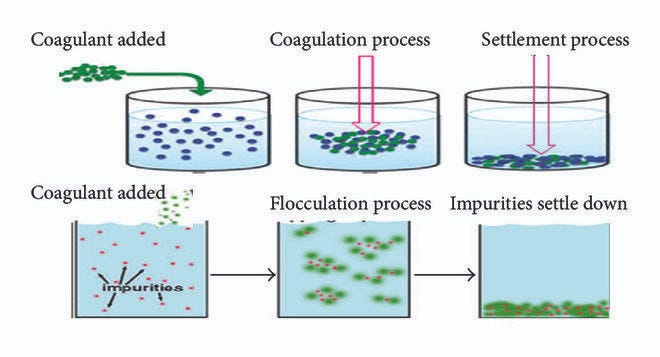What is Flocculation in Water Treatment

What is Flocculation in Water Treatment, Flocculation is a crucial process in water treatment that plays a significant role in purifying water for various uses, from drinking to industrial applications. In this article, we’ll delve into the concept of flocculation, its mechanisms, types of flocculants, and its importance in the realm of water treatment.
1. Introduction
Water is an essential resource, and ensuring its purity is paramount for human health and the environment. Water treatment processes are employed to remove impurities, contaminants, and particles from raw water, making it safe for consumption and other applications. Flocculation is a key step in this process.
2. Understanding Water Treatment
Before we dive into flocculation, let’s understand the basics of water treatment. The primary objective of water treatment is to remove contaminants and make water fit for consumption and various industrial purposes. This involves several steps, including coagulation, sedimentation, filtration, and disinfection.
3. What Is Flocculation?
Flocculation is a physical and chemical process that aids in the aggregation of fine particles in water to form larger, settleable flocs. These flocs can then be easily separated from the water. Flocculation is often the third step in the water treatment process, following coagulation and sedimentation.
4. The Role of Flocculants
To facilitate flocculation, chemicals called flocculants are added to the water. These flocculants help particles to collide, stick together, and form larger clumps. The choice of flocculant depends on the water source and the specific contaminants present.
5. Mechanism of Flocculation
Flocculation occurs when charged particles in the water interact with the flocculant. The flocculant neutralizes the charges on the particles, allowing them to come together and form flocs. These flocs are much heavier than individual particles, making it easier for them to settle out of the water.
6. Types of Flocculants
There are various types of flocculants, including inorganic and organic flocculants. Inorganic flocculants, such as aluminum sulfate and ferric chloride, are commonly used in water treatment. Organic flocculants are also utilized and are often more effective in certain applications.
7. Benefits of Flocculation in Water Treatment
Flocculation offers several advantages in water treatment, such as improved water clarity, reduced turbidity, and enhanced removal of contaminants. It plays a critical role in ensuring that treated water meets regulatory standards and is safe for consumption.
8. Challenges in Flocculation
While flocculation is a valuable process, it is not without challenges. Variability in water quality, temperature, and the presence of organic matter can affect its efficiency. Water treatment plants must carefully manage these factors to ensure effective flocculation.
9. Best Practices in Flocculation
To optimize flocculation, water treatment plants must follow best practices. This includes monitoring and adjusting flocculant dosage, pH levels, and mixing intensity. Continuous research and development in this field have led to improved flocculation techniques.
10. Environmental Impact
It’s important to consider the environmental impact of flocculation. While it helps purify water, the disposal of residual sludge from the process can be an environmental concern. Sustainable practices and innovative solutions are being developed to mitigate this impact.
11. Future Trends in Water Treatment
The field of water treatment is continually evolving. Future trends in water treatment may include more advanced flocculation methods, improved flocculant materials, and enhanced environmental sustainability in the treatment process.
12. Conclusion
In conclusion, flocculation is a vital step in the water treatment process, contributing to the production of clean and safe drinking water. It is a complex yet effective method for removing impurities and contaminants. Water treatment plants must continuously adapt and innovate to meet the ever-increasing demand for clean water.
13. Frequently Asked Questions (FAQs)
What is the main purpose of flocculation in water treatment?
Flocculation’s main purpose is to aggregate fine particles in water, making it easier to remove impurities and contaminants during the water treatment process.
Are there different types of flocculants used in water treatment?
Yes, there are various types of flocculants, including inorganic and organic options. The choice depends on the specific water source and contaminants.
What challenges does the flocculation process face in water treatment?
Flocculation can face challenges due to variations in water quality, temperature, and the presence of organic matter, which can affect its efficiency.
How does flocculation impact the environment?
While flocculation helps purify water, the disposal of residual sludge can have environmental implications. Sustainable practices are being developed to address this concern.
What can we expect in the future of water treatment and flocculation?
The future of water treatment may involve advanced flocculation methods, improved flocculant materials, and a greater focus on environmental sustainability in the treatment process.